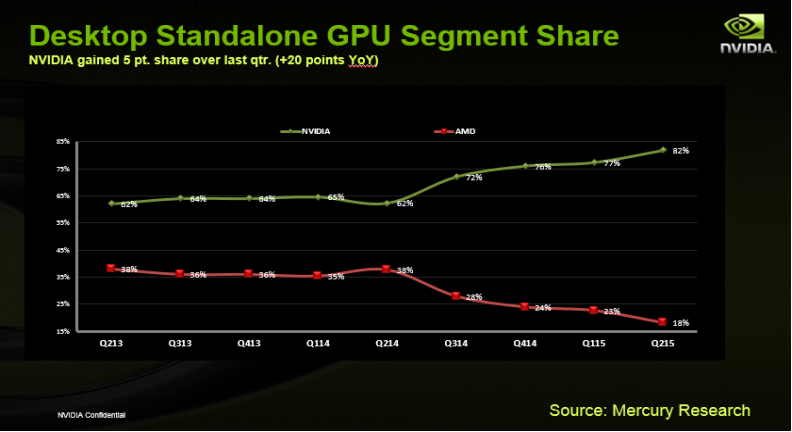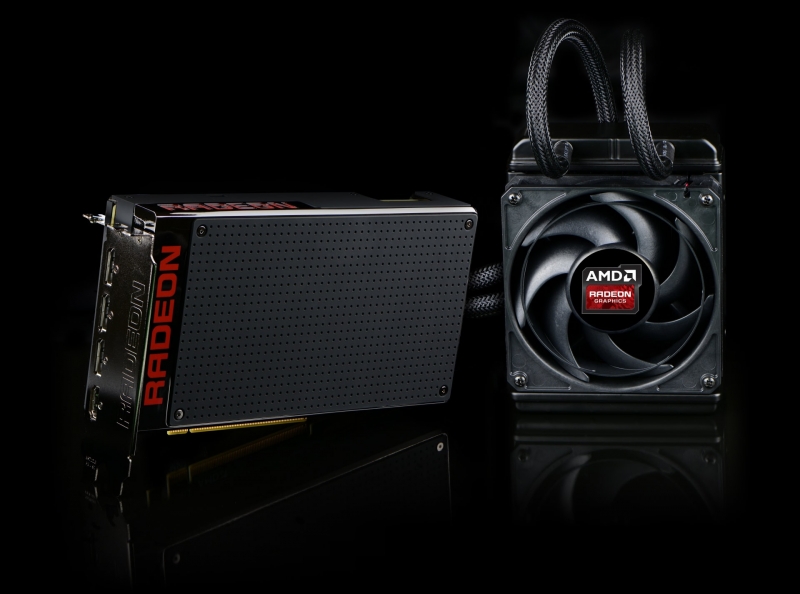Back in Q4 2014, we caught word that Nvidia was ahead in the discrete GPU market with 76% market share, heavily outweighing AMD's contributions. At the time, Nvidia's highest performing card was the GTX 980. This was long before Titan X came out in March of this year, and the GTX 980 Ti in June, both of which boasted improved support for 4K gaming, no sweat.
The R9 390X was supposed to introduce a positive change for the Sunnyvale, California-based chip maker, but on the contrary, it was anything but revolutionary. Instead, it was just another reskin of the 300 series video cards.
Now, Nvidia has unsurprisingly taken yet another leap, pouncing AMD once again at a sudden boost from 76% market share in Q4 2014 to 82% in Q2 2015, acording to data acquired by Mercury Research. Even after issuing a slew of new products, AMD has failed to redeem itself assigning it a worrying label of 18% market share.
Curiously, even its futuristic R9 Fury X card couldn't save it from a disastrous year in sales. Tweaktown reports that this is due to a low manufacturing rate of the HBM1 modules, with only 30,000 units made over an entire year. Also problematic is the concern over performance comparisons with Nvidia's GeForce GTX 980 Ti, which has proved to be a better value in raw price vs. performance, especially if you overclock.

With so few on the market and so little difference between HBM1 and GDDR5 technology, incentive to buy AMD over Nvidia is marginal, at least presently. On top of that, the Fury X's AIO cooler while benefitial and attractive to prospective buyers of a high-end GPU, hasn't come without drawbacks.
Moving forward, Nvidia is planning to introduce its GP100 and GP104 next year, both sporting the forthcoming Pascal architecture. AMD, on the other hand, seems to be sticking with the Fiji architecture.
Likewise, Nvidia will be moving to the 16nm fabrication process and plans to skip HBM1 and attempt HBM2 head-on. With the new module, Nvidia will be able to present memory bandwidth of approximately 1 terabyte per second, nearly double that of the Fury X's 512GB/sec speeds.
Looking ahead, AMD can only hope that Nvidia releases one hell of a failed product in the coming year. Even in that unlikely scenario, it would be nearly impossible to regain its lost GPU market share considering it hasn't seen 35% since the first quarter of 2014.
Editor's note: Article edited to remove negative comment about the Fury X's cooler which is not our official stance, as published in our full review of the AMD Radeon Fury X.
